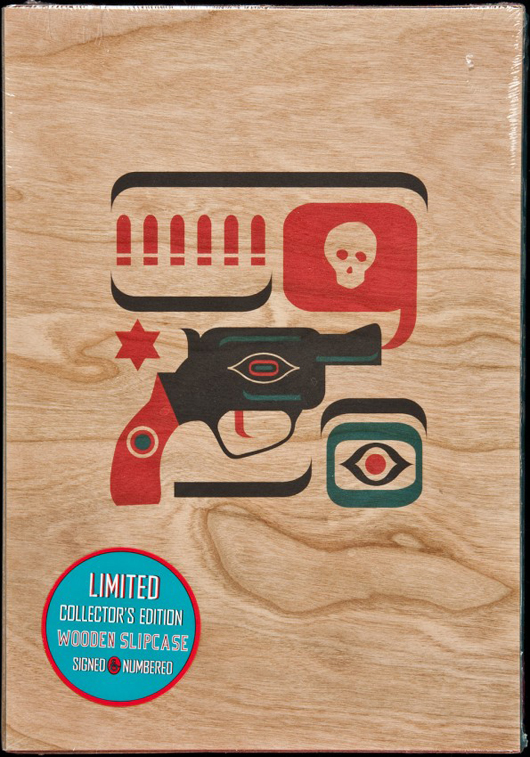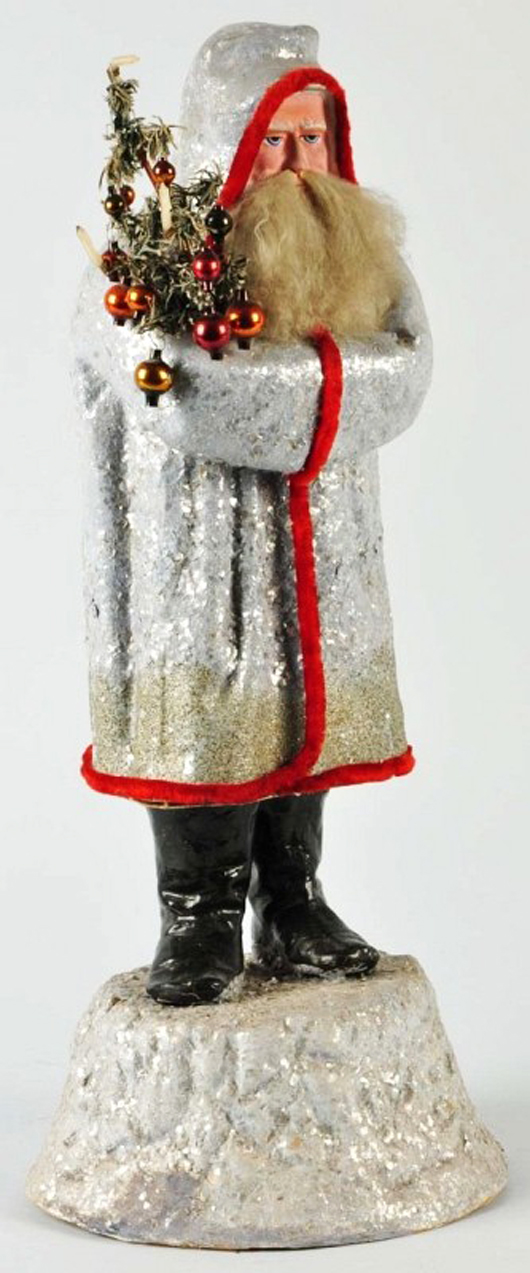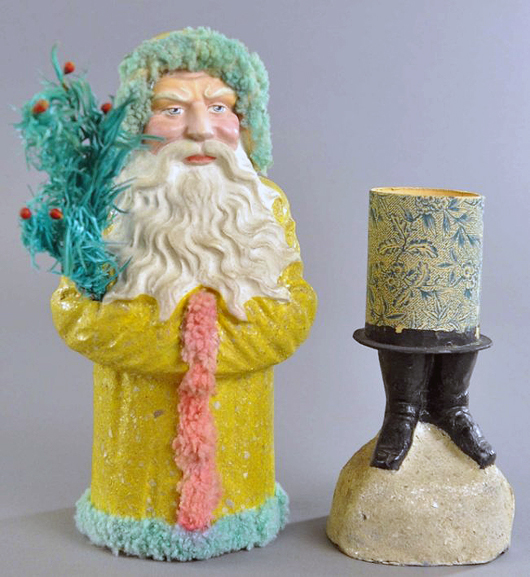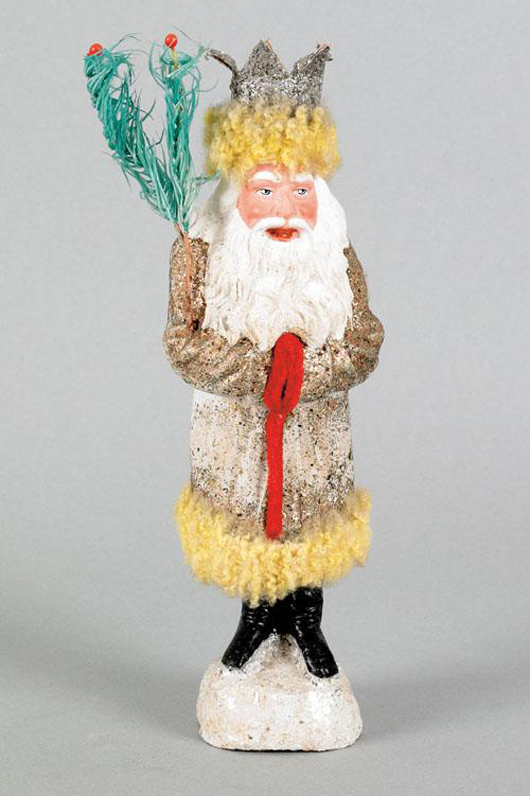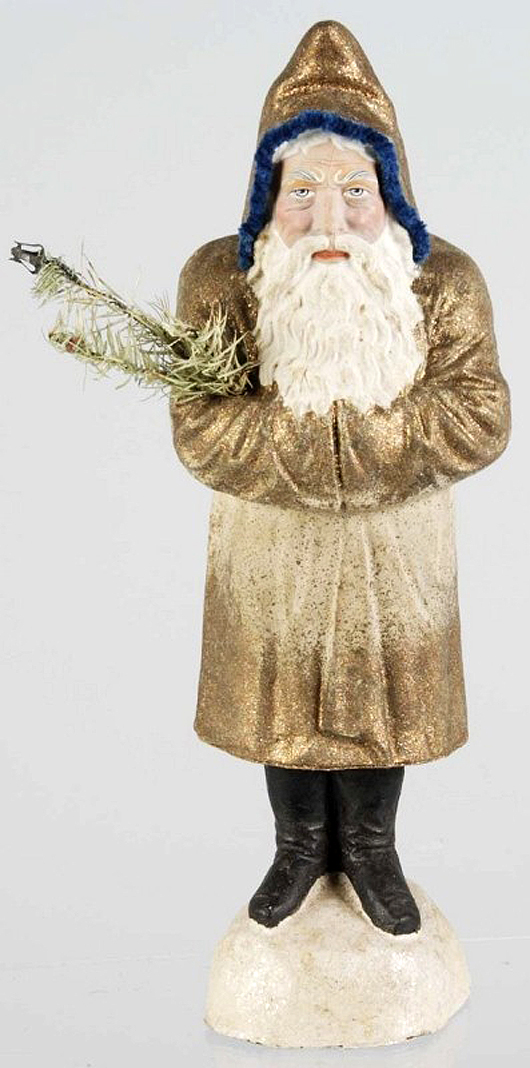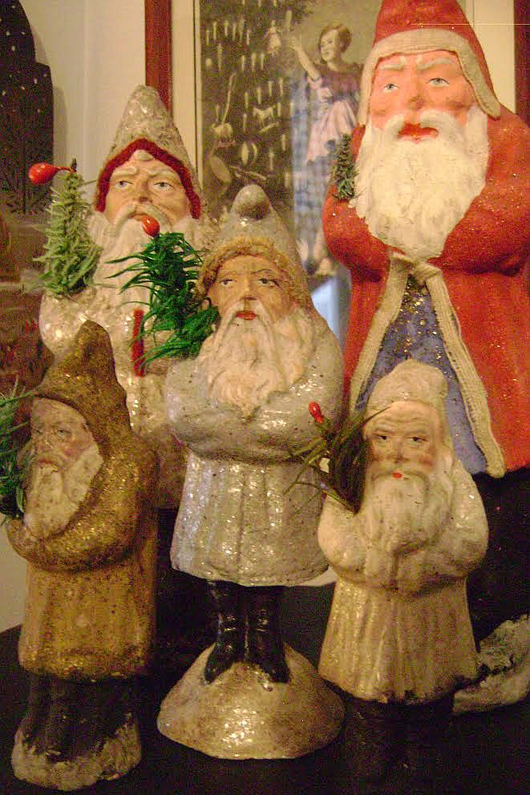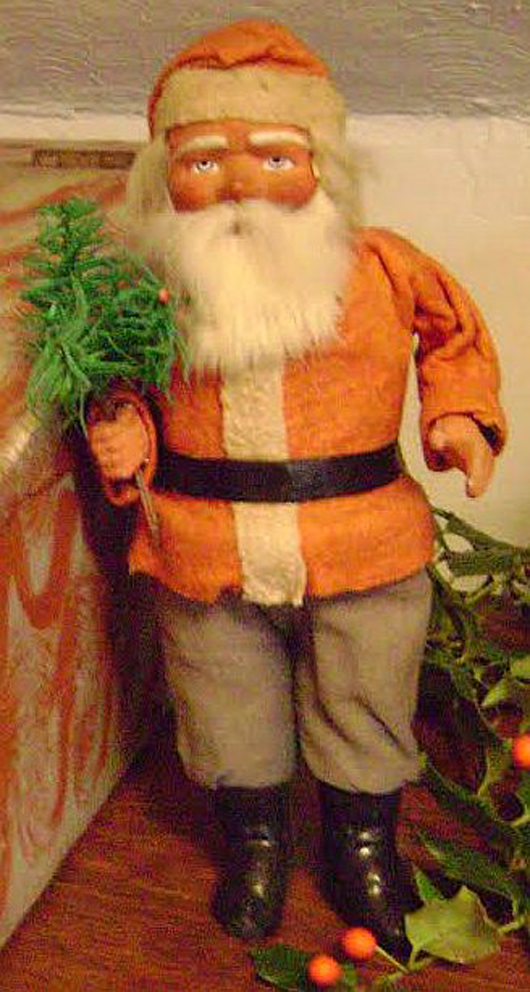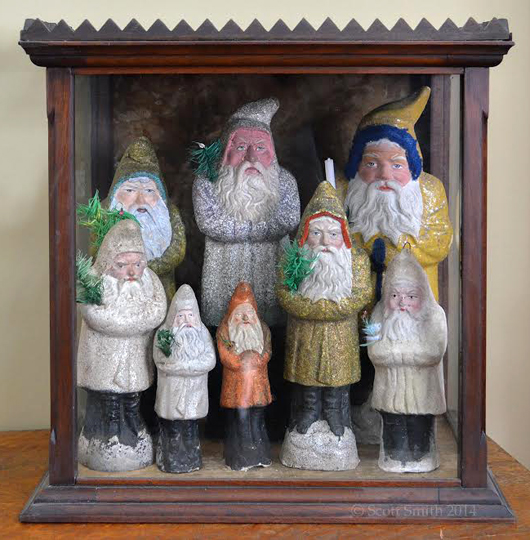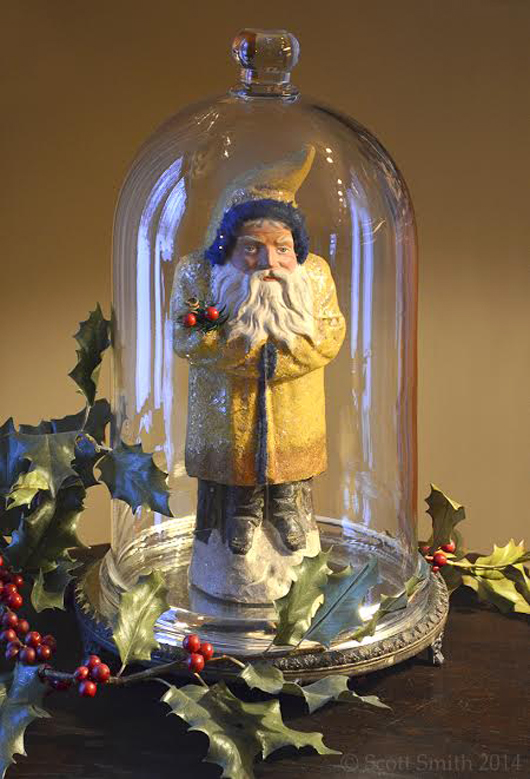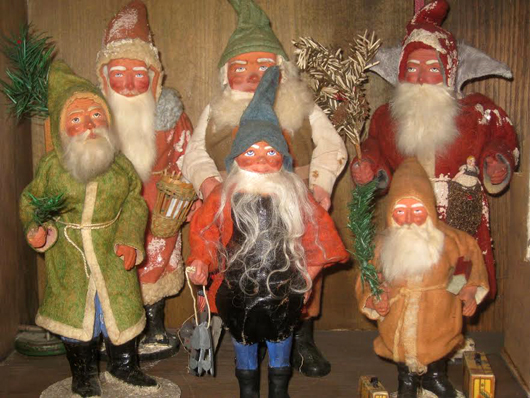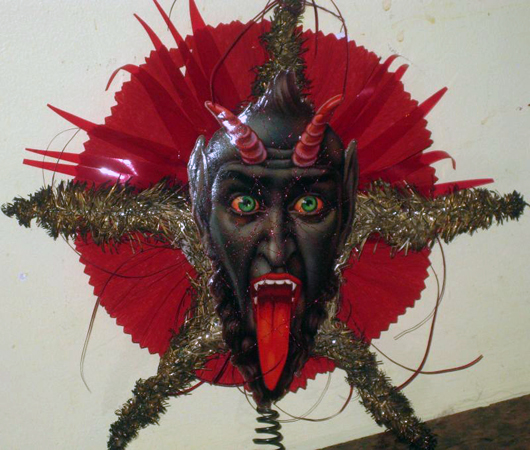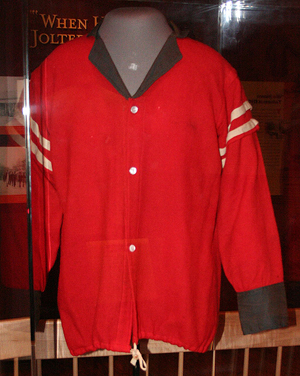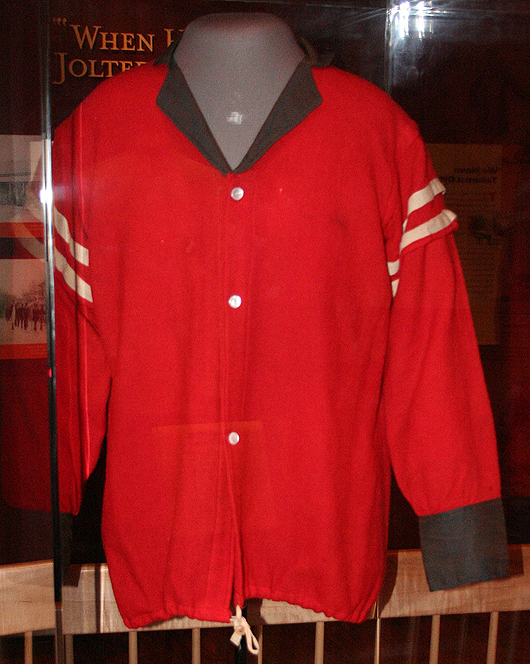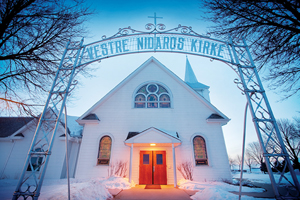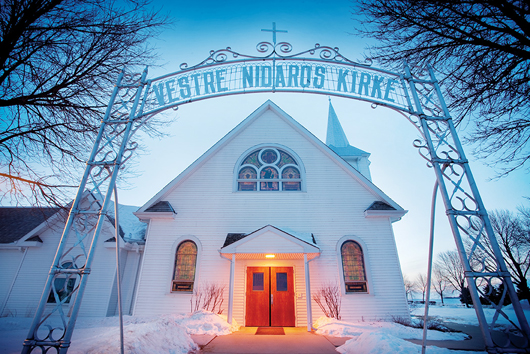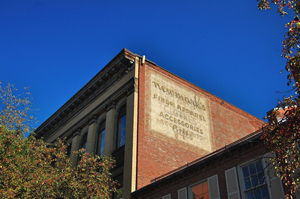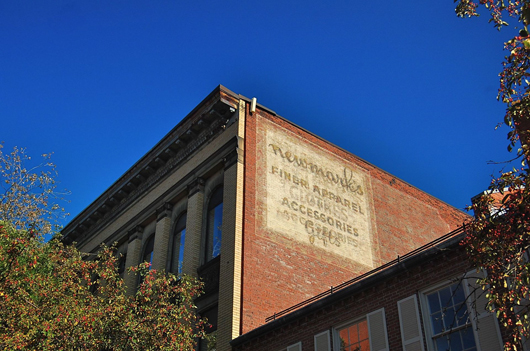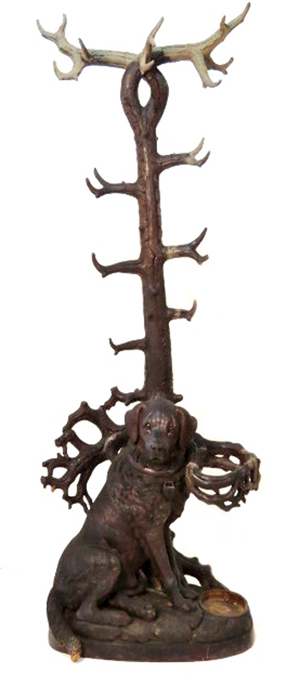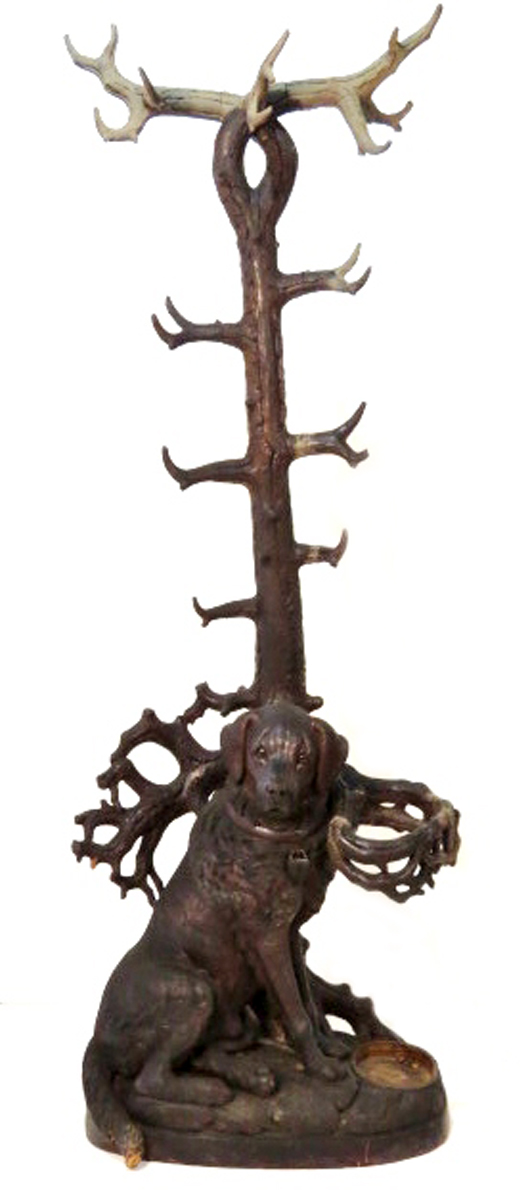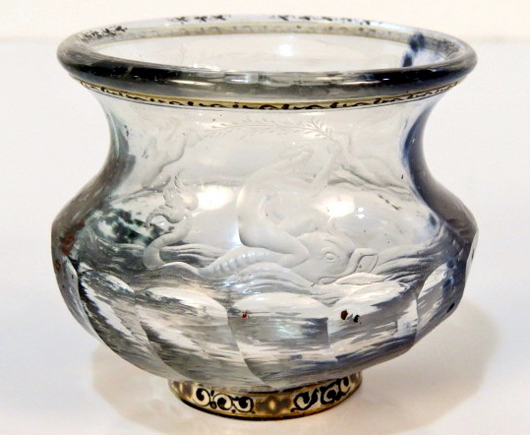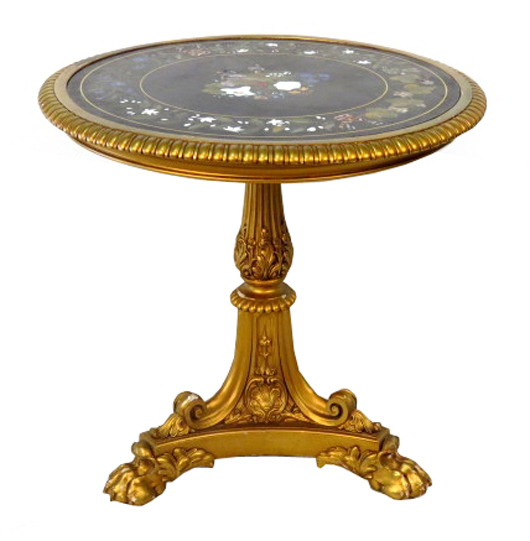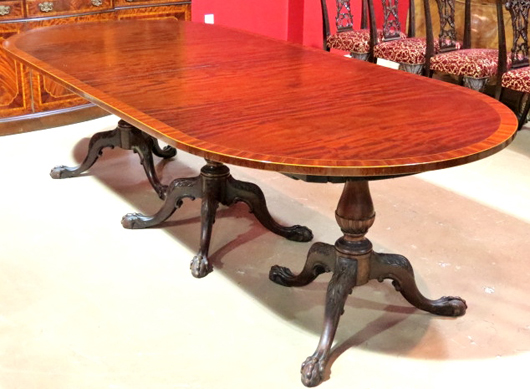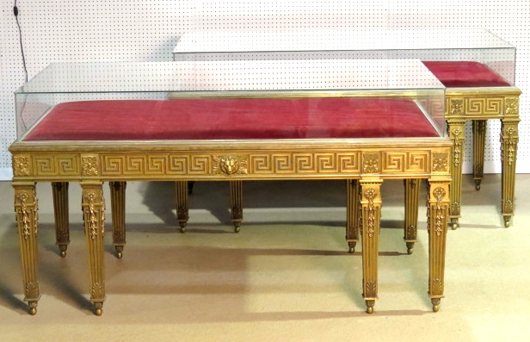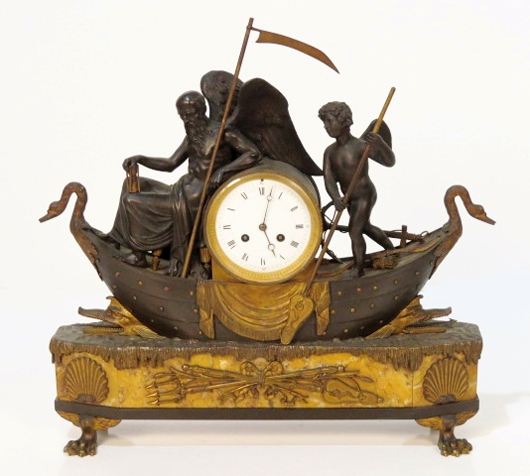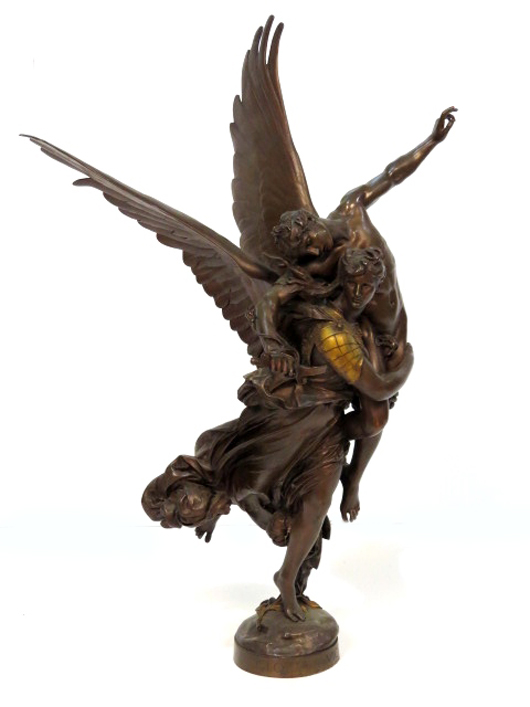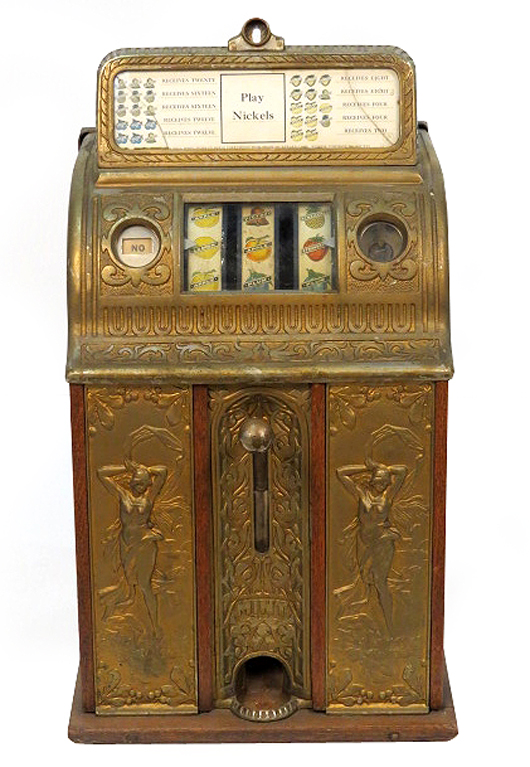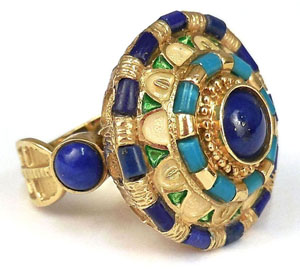
22K gold ring with lapis lazuli and turquoise stones, possibly Egyptian, 15.3 grams. Est. $400-$600. Stephenson’s Auctioneers imagePHILA., Pa. – Philadelphia is a city of decorum and tradition, and to those in the region who collect and sell antiques, the first tradition of each year is attending Stephenson’s New Year’s Day Auction. Family owned since 1962, Stephenson’s, in suburban Bucks County, specializes in fresh to the market estate goods and collections from the Mid-Atlantic states. Throughout the year, the company’s specialists carefully curate and set aside rare, beautiful and interesting objects specifically to offer in their New Year’s auction. Their Jan. 1, 2015 sale selection is characterized by the soft glow of silver, gold and platinum; the mystery and serenity of a rare 15th-century Tibetan Buddha, and a variety of important art with a Philadelphia connection.
LiveAuctioneers.com will provide Internet live bidding.
During the opening hour of the sale, Stephenson’s auctioneer and owner, Cindy Stephenson, will present fine glass, crystal and porcelain, including oyster plate collections from two gracious Philadelphia-area homes. Some of the plates have a turkey depiction on them and are less commonly seen than standard oyster plates. Lot 60 consists of nine Haviland & Co., Limoges turkey oyster plates. Wonderfully decorated, the set is expected to make $500-$800.
Also included in the porcelain section are several fish service plates and sets. Lot 58, a 15-piece Limoges porcelain fish set, contains 12 plates, a sauceboat, under tray and platter. Each piece is hand painted and has fancy gilt edges. The set is entered in the sale with a $500-$800 estimate.
An Asian treasure attributed to 15th-century Tibet, Lot 90B is a bronze-dore statue of Amitayus (Sanskrit), the Buddha of Infinite Light and Infinite Life. The 4¾-inch-high depiction of the ancient deity was cast using the lost wax method. It comes to auction from a Philadelphia estate and, according to its provenance, it was purchased in 1989 from Jaipaul Gallery in Philadelphia. The statue’s estimate is $500-$800, and according to auctioneer Stephenson, it is already attracting “a lot of interest.”
Close to 90 lots of outstanding American, Continental and Russian silver will follow. Flatware offerings include two sets by Stieff (Williamsburg Queen Anne and Princess patterns) and two sets by Gorham (Chantilly and Lyric). Whether the preference is for tea or coffee, there will be many services available to do double duty. Among them are tea and coffee sets by J.E. Caldwell, C.M. Cohr, David Andersen, Gorham and other premier names.
Estimated at $800-$1,200, Lot 116 is a silver tankard of .830 silver hand-crafted by J. Tolstrup of Oslo, Norway. Masterfully engraved and decorated with floral and foliate repousse embellishments, it stands on three ball-and-claw feet and has a three-dimensional lion “tipper” on its lid. The estimate is set at $800-$1,200.
A prime example of Russian excellence in cloisonné enamel artistry, Lot 153 is a silver kovsh with jeweled cabochons and floral decorations. Beneath its base is the mark for Kokoshnik Moscow. Measuring 4 inches by 2 inches and having a total weight of 2.61 ozt, the kovsh displays all of the aesthetic features that appeal to collectors of Russian fine metalwork. Its estimate is $300-$600.
Lot 342, a bronze plaque with figures by Stella Elkins Tyler, has a strong connection to Philadelphia. In 1964, Bucks County Community College was founded on the estate formerly belonging to Tyler – heiress to a Gilded Age fortune – and her husband, George. With its grand architecture and sumptuous formal gardens, the suburban Newtown property was the perfect setting for many of Stella Tyler’s bronze sculptures. Decades earlier, in 1935, her first home, located in Philadelphia’s exclusive Elkins Park, became the Stella Elkins Tyler School of Fine Arts of Temple University.
The signed 20th-century bronze plaque in Stephenson’s New Year’s Day auction measures 16 by 21 inches and is estimated at $1,200-$3,000.
The City of Brotherly Love was also the setting in 1838 for the printing of a series of hand-colored folio lithographs for McKenney & Hall’s History of the Native American Tribes of North America. Lot 355 consists of four lithographs from the publication, each measuring 18 by 12½ inches (sight). At one point in their trail of ownership, they were acquired from the Philadelphia Print Shop in the city’s historic Chestnut Hill neighborhood. Accompanied by a letter and brochure from the print shop, they will be offered as one lot with a pre-auction estimate of $1,200-$3,000.
Lots 362 and 363 are watercolors on paper by Philadelphia artist John B. Lear Jr. (1910-2008). Each is a quintessential example of Lear’s style – which focused on figures and human anatomy – and carries a $500-$1,000 estimate.
Almost every Stephenson’s event includes an extensive selection of estate jewelry, and the Jan. 1 sale is no exception. Among the top highlights is Lot 282, an unusual 18K white gold eternity band designed with alternating single and stacked double diamonds. In total, there are 18 marquise-cut diamonds with a total carat weight of 3.42 carats. Stylish and very different from traditional eternity bands, it is expected to reach $3,000-$4,000 on auction day.
Also poised for the spotlight is Lot 180, a 22K gold ring, possibly of Egyptian origin, with lapis lazuli and turquoise artfully arranged around a center lapis cabochon stone. A true statement piece, the circa-1980 ring is estimated at $400-$600.
Stephenson’s Thursday, Jan. 1 New Year’s Day Auction will begin at 10 a.m. Eastern Time. For additional information on any lot in the sale, call Cindy Stephenson at 215-322-6182 or e-mail info@stephensonsauction.com.
View the fully illustrated online catalog and sign up to bid absentee or live via the Internet as the sale is taking place by logging on to www.LiveAuctioneers.com
ADDITIONAL LOTS OF NOTE
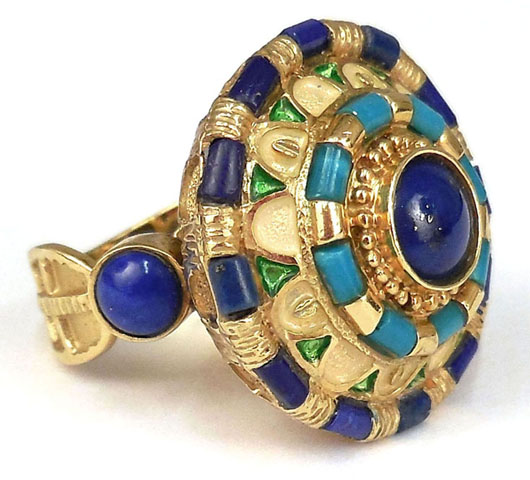
Limoges porcelain fish service. Stephenson’s Auctioneers image 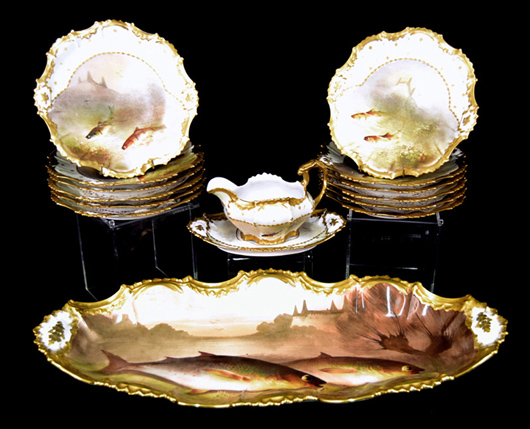
Limoges porcelain fish service. Stephenson’s Auctioneers image 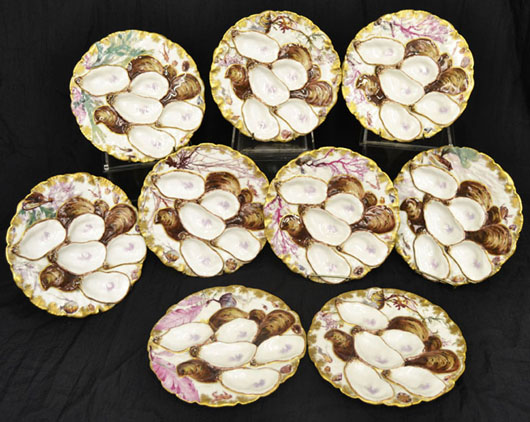
Nine Haviland & Co. Limoges turkey oyster plates. Stephenson’s Auctioneers image 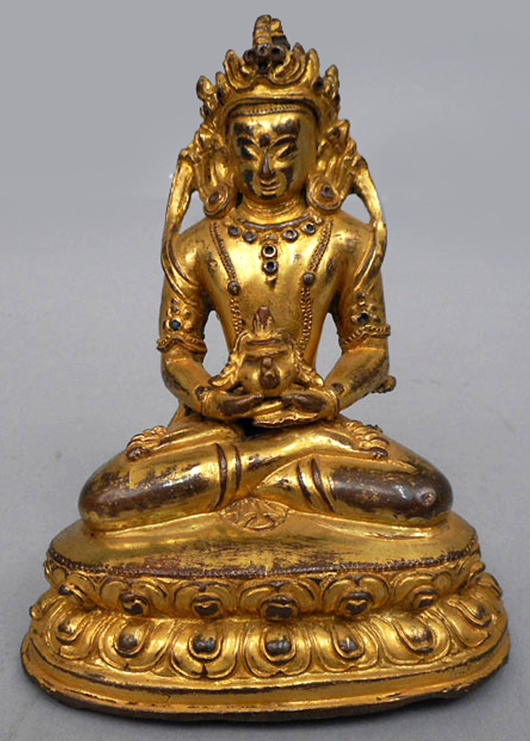
Dore bronze statue of Amitayus, Buddha of infinite life and infinite light, attrib. 15th century, Tibet. Est. $500-$800. Stephenson’s Auctioneers image 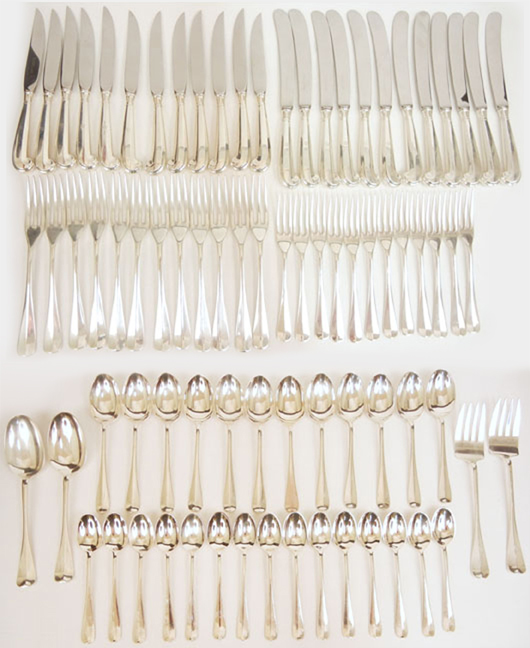
Stieff Williamsburg Queen Anne sterling silver flatware set, one of many silver services to be offered. Stephenson’s Auctioneers image 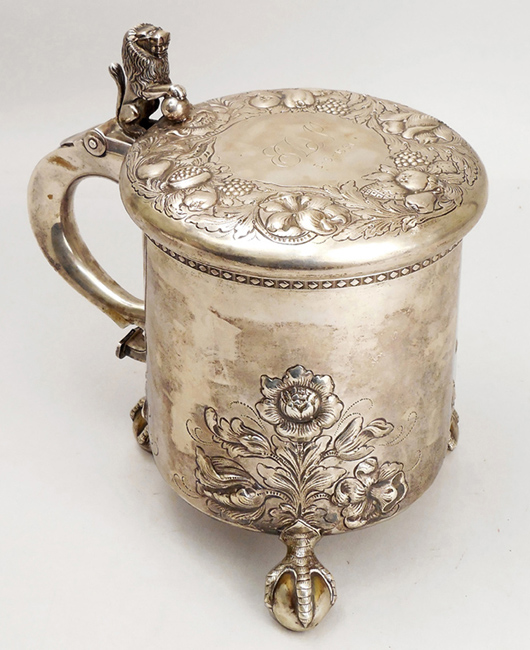
J. Tolstrup, Oslo, .830 silver tankard with ball and claw feet. Est. $800-$1,200. Stephenson’s Auctioneers image 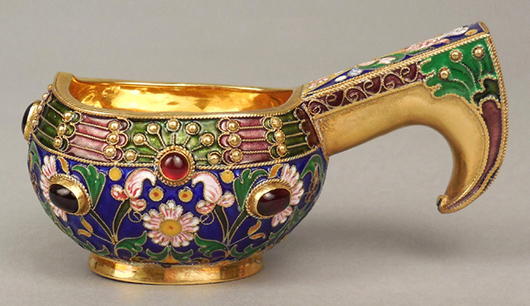
Russian kovsh, enameled silver, cloisonne and jewels, Moscow Kokoshnik mark on bottom, 2.61ozt. Est. $300-$600. Stephenson’s Auctioneers image 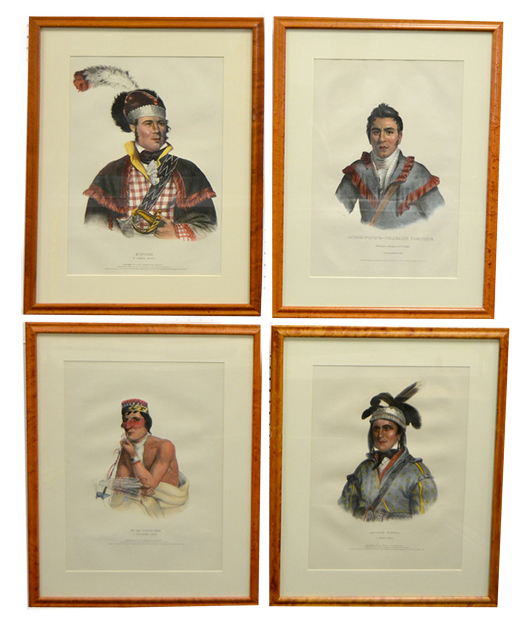
Set of 4 folio lithographs from ‘History of the Native American Tribes of North America, printed in Philadelphia in 1838 for McKenney & Hall. Lot estimate $1,200-$3,000. Stephenson’s Auctioneers image 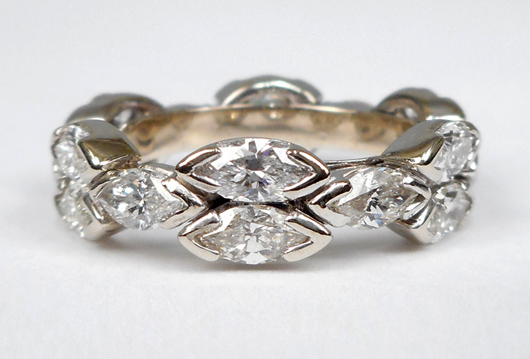
18K diamond eternity band. Est. $3,000-$4,000. Stephenson’s Auctioneers image 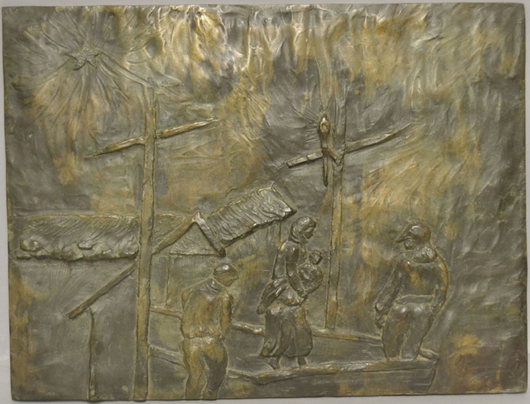
Closeup of detail on Stella Elkins Tyler bronze plaque. Est. $1,200-$3,000. Stephenson’s Auctioneers image




